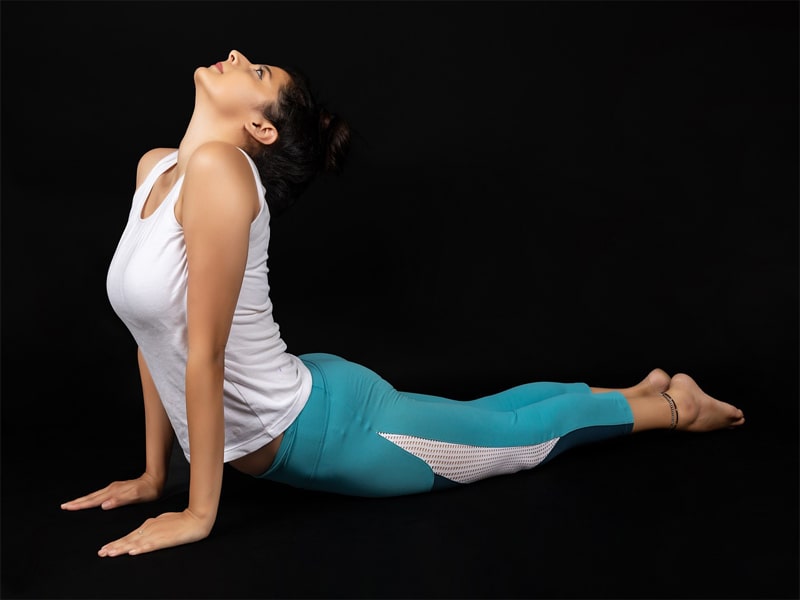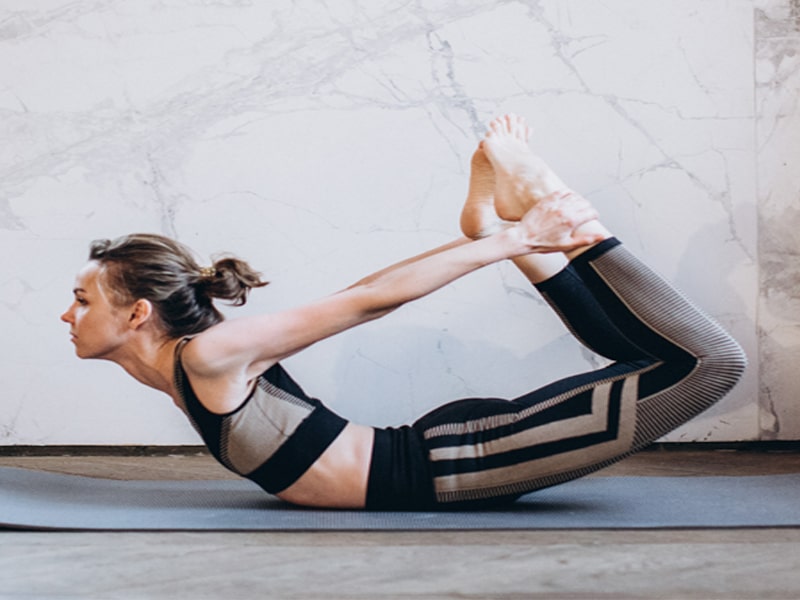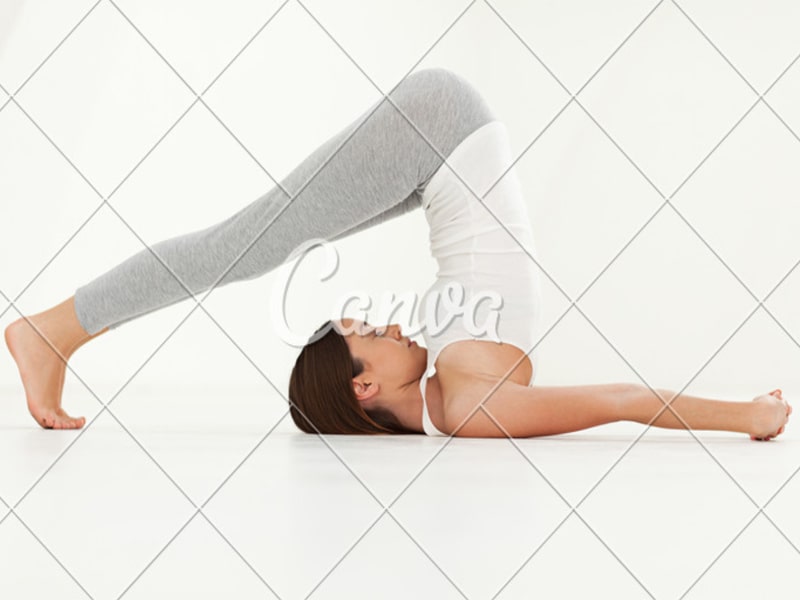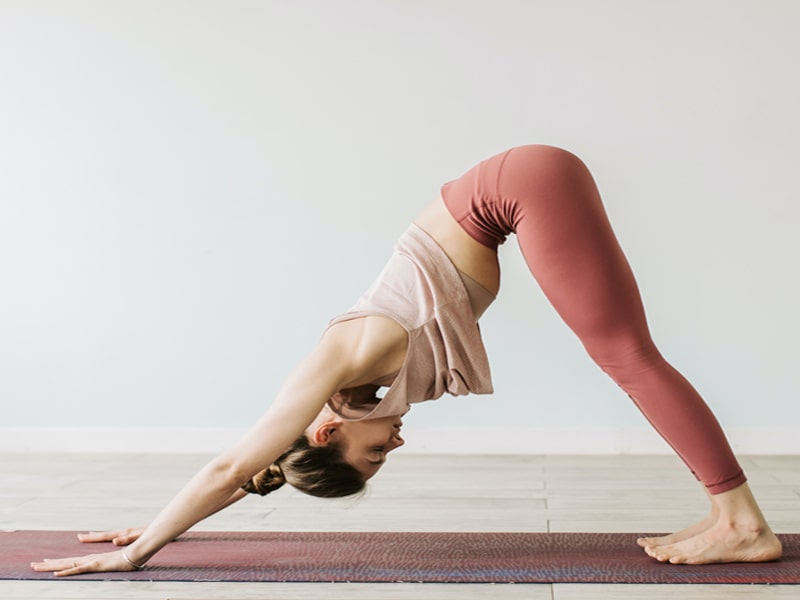Bhujanga Asana is a popular yoga pose that offers numerous benefits for both the body and mind. It is a simple yet powerful asana that requires flexibility and strength in the spine, arms, and legs. In this article, we will delve into the definition, history, benefits, and variations of Bhujanga Asana, as well as the step by step instructions for performing it, the precautions to take, and common mistakes to avoid. We will also discuss the best time to practice Bhujanga Asana and how to integrate it into your yoga practice, along with other complementary yoga asanas.
Also Read :- Salabha Asana – An Overview of the Locust Pose
Introduction to Bhujanga Asana
Bhujanga Asana, also known as Cobra Pose, is a backward bending asana that resembles the hooded cobra with its head raised and poised to strike. It is named after the Sanskrit word “bhujanga” which means “snake” or “serpent.” This asana is performed in a prone position, and the main focus is on the spine, as it is gently stretched and strengthened.
Benefits of practicing Bhujanga Asana
Bhujanga Asana has numerous physical and mental benefits that make it a great addition to any yoga practice. Some of the key benefits of Bhujanga Asana include :-
-
Strengthening the spine and neck
-
Improving posture and flexibility
-
Relieving stress and anxiety
-
Stimulating the abdominal organs and improving digestion
-
Relieving menstrual pain and discomfort
-
Stretching the chest, shoulders, and abdominal muscles
Brief history of Bhujanga Asana
Bhujanga Asana has been practiced for thousands of years as a part of traditional yoga. It is mentioned in the ancient Hindu scriptures and is believed to have originated in India. Bhujanga Asana is considered to be a key asana in the Hatha Yoga tradition, and it is an integral part of many yoga styles and practices, including Ashtanga and Vinyasa yoga.
Also Read :- 9 Best Yoga Resistance Bands in Indian Market
How To Perform Bhujanga Asana
Step by step instructions for performing Bhujanga Asana :-
-
Start by lying on your stomach with your hands under your shoulders and your elbows close to your body.
-
Place your forehead on the ground and relax your neck.
-
Inhale and press your palms into the ground to lift your head, neck, and upper back off the ground.
-
Keep your elbows close to your body and maintain a slight bend in your arms as you lift your chest towards the sky.
-
Open your heart and lift your gaze towards the ceiling, keeping your neck relaxed and your shoulders down.
-
Hold the pose for 5-10 breaths, and then release and relax on the ground.
A. Precautions to be taken while practicing Bhujanga Asana
-
People with neck or back injuries should avoid performing Bhujanga Asana, or do so with caution and under the guidance of a qualified yoga teacher.
-
Pregnant women should also avoid performing Bhujanga Asana, as it may put pressure on the uterus.
-
People with high blood pressure should also exercise caution when performing Bhujanga Asana, as it may increase the blood flow to the head.
B. Common mistakes to avoid while performing Bhujanga Asana
-
Arching the neck :- To avoid putting strain on the neck, keep your neck relaxed and your gaze towards the ceiling, rather than looking up.
-
Overstretching the arms :- To avoid putting unnecessary strain on your shoulders, keep a slight bend in your arms and use your back muscles to lift your chest towards the sky.
-
Holding the pose for too long :- Overstaying in the pose can lead to discomfort and injury, so it is important to only hold the pose for 5-10 breaths at a time.
Also Read :- Best Yoga Images HD To Watch Here
Variations of Bhujanga Asana
-
Parvatasana Bhujanga Asana :- This variation involves lifting both the arms and legs off the ground, creating a mountain-like shape with the body. This variation offers an extra challenge to the arms and legs, while also strengthening the back muscles.
-
Salamba Bhujanga Asana :- This variation involves performing Bhujanga Asana with the support of the arms, making it a great option for those who are just starting out or who have back or neck injuries.
-
Urdhva Mukha Bhujanga Asana :- This variation involves lifting the legs off the ground while maintaining the lift in the upper back, creating a U-shaped curve in the spine. This variation offers an extra challenge to the legs and core, while also strengthening the back muscles.
Also Read :- 6 Best Branded Yoga Chairs in Indian Market
Sequencing of Bhujanga Asana in a yoga practice
Bhujanga Asana is typically performed early in a yoga practice, as it is a warm-up pose that prepares the body for more challenging asanas. The best time to practice Bhujanga Asana is in the morning, when the body is fresh and energized.
A. How to integrate Bhujanga Asana into a yoga flow
Bhujanga Asana can be integrated into a yoga flow in various ways, depending on the style of yoga being practiced. In Ashtanga yoga, Bhujanga Asana is typically performed as part of the Surya Namaskar (Sun Salutation) sequence. In Vinyasa yoga, Bhujanga Asana can be performed as part of a flowing sequence, moving smoothly from one pose to the next with the breath.
B. Other yoga asanas that complement Bhujanga Asana
-
Adho Mukha Svanasana (Downward Facing Dog) :- This pose helps to stretch and strengthen the spine, as well as the arms and legs.
-
Ustrasana (Camel Pose) :- This pose also involves a backward bend, offering a deeper stretch to the spine and opening the chest.
-
Dhanurasana (Bow Pose) :- This pose strengthens the back muscles and improves posture, while also stretching the chest and abdominal muscles.
Conclusion
In conclusion, Bhujanga Asana is a powerful yoga pose that offers numerous physical and mental benefits. It is a simple yet effective pose that can be easily integrated into any yoga practice, and it is a great way to strengthen the spine, relieve stress and anxiety, and improve posture and flexibility. So, make sure to incorporate Bhujanga Asana into your yoga practice and enjoy its many benefits.



